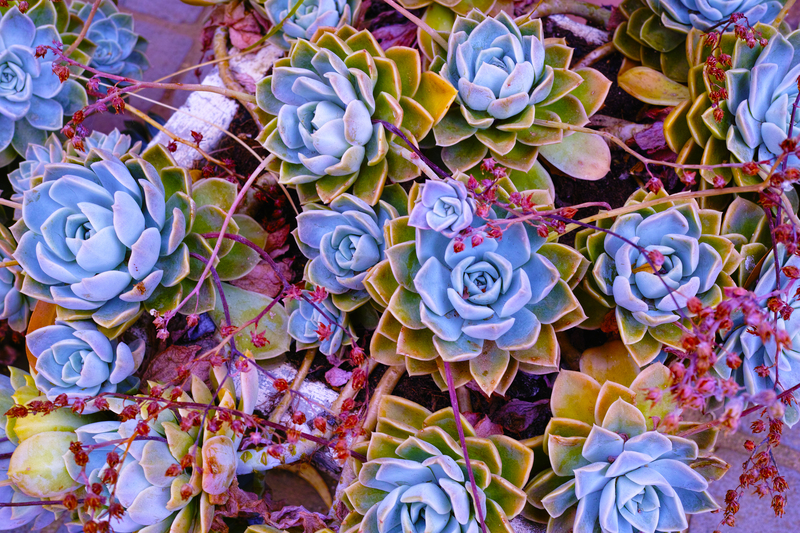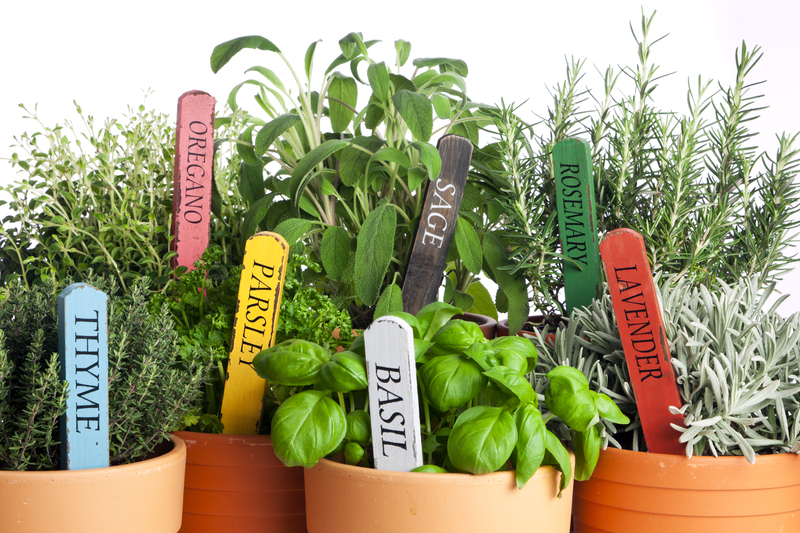Crafting Nutrient-Rich Soil from Organic Residue
Posted on 14/08/2025
Crafting Nutrient-Rich Soil from Organic Residue: An In-Depth Guide
Crafting nutrient-rich soil from organic residue is one of the most effective ways to enhance the fertility of your garden, reduce waste, and foster a sustainable approach to agriculture and home gardening. By transforming kitchen scraps, yard waste, and other natural materials into fertile soil, gardeners and farmers can support healthy plant growth and minimize environmental impact.

Understanding Organic Residue and Its Role in Soil Health
Before delving into the process of creating nutrient-dense soil from organic residue, it's vital to comprehend what organic residue is and why it matters. Organic residues are natural materials left over from plants, animals, and other organisms. This includes items like:
- Vegetable and fruit peels
- Coffee grounds and tea leaves
- Eggshells
- Grass clippings
- Dead leaves and twigs
- Manure from herbivorous animals
These materials are rich in essential nutrients, including nitrogen, phosphorus, potassium, and a host of micronutrients. When decomposed and integrated properly, they form the backbone of nutrient-rich soil systems, supporting lush lawns, thriving vegetable gardens, and productive flower beds.
The Science Behind Nutrient-Rich Soil Formation
The transformation of organic residue into high-quality soil hinges on the process of decomposition. Microorganisms such as bacteria, fungi, and actinomycetes break down complex organic molecules into simpler compounds, enriching the soil with essential nutrients. The main stages in this transformation are:
- Fragmentation: Larger organic materials are broken down by physical and biological means into smaller particles.
- Decomposition: Microbes and soil invertebrates further metabolize these fragments, releasing nutrients.
- Humification: Stable organic matter (humus) is formed, enhancing soil structure and fertility.
By crafting nutrient-rich soil from organic residue, you create an environment teeming with life, activity, and sustainable productivity.
Benefits of Utilizing Organic Waste for Soil Enrichment
Turning organic waste into nutrient-rich soil offers a variety of ecological, economic, and agricultural advantages:
- Reduces landfill waste: Recycling organic residue means less trash in landfills, cutting methane emissions and pollution.
- Improves soil structure: Added organic matter increases aeration, water retention, and root penetration.
- Enhances plant nutrition: Decomposed residues supply steady nutrients for robust growth.
- Cost-effective: Homemade compost or soil amendments lower dependency on chemical fertilizers.
- Promotes biodiversity: Healthy soils foster diverse microbial and insect life that supports plant health.
- Carbon sequestration: Organic matter helps capture and store carbon in the soil, mitigating climate change.
By carefully crafting nutrient-rich soil with your own organic residue, you revolutionize your gardening practice and contribute to a more sustainable world.
Step-by-Step Process to Craft Nutrient-Rich Soil from Organic Residue
1. Select the Right Organic Matter
A strategic approach to selecting and combining residues is crucial. Prioritize a mix of "greens" (nitrogen-rich materials) and "browns" (carbon-rich materials).
- Greens include: fruit and vegetable scraps, coffee grounds, grass clippings, manure (from herbivores).
- Browns include: dry leaves, straw, sawdust, shredded cardboard, twigs.
Aim for a carbon-to-nitrogen ratio (C:N) of approximately 30:1. This optimal balance accelerates decomposition and ensures nutrient retention.
2. Prepare and Layer Materials
Shred or chop larger materials for faster breakdown. Layer browns and greens alternately to create a balanced pile:
- Start with coarse material at the bottom for aeration
- Add a 2-4 inch layer of greens
- Top with a similar layer of browns
- Repeat until the pile is 3-4 feet tall
Moisten each layer as you build; the pile should be as damp as a wrung-out sponge.
3. Facilitate Decomposition
Decomposition occurs fastest in an environment with adequate moisture, aeration, and warmth. Place your compost pile in a semi-shaded area, and turn it every few weeks to introduce oxygen and mix the materials. Watch the pile's temperature--compost heats up as microbial activity peaks.
- If the pile gets too dry, add water
- If it's too wet or smelly, add more browns and turn more often
4. Monitor and Maintain
The composting process can take as little as two months or as long as a year. Finished nutrient-rich compost will be dark, crumbly, and earthy-scented. Ensure there are no recognizable food particles or residues.
5. Apply and Integrate Nutrient-Rich Soil
Use your homemade soil amendment by:
- Spreading it over garden beds or lawns
- Mixing it into planting holes
- Using it as potting mix when combined with sand or perlite
- Creating mulch layers around trees and shrubs
Advanced Techniques for Enhanced Soil Nutrition
Vermicomposting: Harnessing Worm Power
Vermicomposting is the use of specialized earthworms--such as red wigglers--to speed up and enhance the composting process. Worms digest organic residue and excrete castings, which are exceptionally high in nutrients and beneficial microorganisms. With a properly managed worm bin:
- Residues break down much faster
- Pathogens and weed seeds are reduced
- The resulting soil is rich in plant-available nutrients and humic substances
Bokashi: Anaerobic Fermentation for Quick Compost
Bokashi composting uses a microbial inoculant to ferment organic waste in an anaerobic (oxygen-free) environment. This method allows you to process a wider range of materials--including dairy and meats--and results in a pre-compost that can be buried in the soil for rapid decomposition and enrichment.
Biochar: Amplifying Soil Fertility with Charcoal
Biochar is a form of charcoal created from burning organic matter in low-oxygen conditions. When added to soil, it:
- Boosts nutrient and water retention
- Provides habitat for beneficial microbes
- Reduces greenhouse gas emissions
- Improves poor soils over the long term
Combine biochar with your composted organic residue for even more powerful nutrient-rich soil.
Common Mistakes in Crafting Nutrient-Rich Soil and How to Avoid Them
While making fertile soil from organic waste is straightforward, several common errors can hinder your success:
- Neglecting balance: Too many "greens" lead to a smelly, wet heap; too many "browns" slow decomposition.
- Overlooking aeration: Compacted piles decompose poorly and may develop unpleasant odors.
- Forgetting moisture: Dry piles stop decomposing, while soggy ones turn anaerobic.
- Adding problematic materials: Avoid meats, oils, diseased plants, or pet waste, which may attract pests or introduce pathogens.
- Impatience: Compost needs time; rushing the process can mean unfinished soil with weed seeds or harmful microbes.
Maximizing Soil Health: Test, Amend, and Repeat
Even after crafting your own nutrient-rich soil from organic residue, it's wise to periodically test your soil's pH and nutrient levels. Home test kits or professional labs can help you fine-tune your soil amendments. Adjust with additional compost, lime, gypsum, rock phosphate, or other natural inputs to correct any deficiencies and maintain optimal fertility.
Environmental Impact: Building Sustainable Food Systems with Enriched Soil
The global significance of turning organic residue into fertile soil cannot be overstated.
- Reduces pressure on municipal waste systems
- Cuts the need for synthetic fertilizers and their associated pollution
- Protects waterways by preventing nutrient runoff
- Sequesters carbon, helping to mitigate climate change
By integrating composting and nutrient recycling into everyday life, individuals and communities can contribute to larger efforts toward regenerative agriculture and food security.
Conclusion: Start Crafting Nutrient-Rich Soil from Organic Residue Today
By embracing the principles and practices of creating fertile soil from organic leftovers, you transform what was once considered waste into a valuable asset for your garden and the planet. Whether you are a home gardener, an urban farmer, or simply someone keen on sustainability, adopting these techniques offers numerous benefits:
- Healthier plants that yield more produce
- Stronger soil structure that resists erosion and drought
- Participation in a circular, regenerative economy
Begin today by collecting your organic residues, setting up a composting system, and observing the transformation. With attention, patience, and care, you'll soon harness the magic of soil creation--a cornerstone of thriving ecosystems and sustainable agriculture.

Frequently Asked Questions About Crafting Nutrient-Rich Soil from Organic Residue
1. What is the fastest method to turn organic waste into fertile soil?
Hot composting, which involves frequent turning and careful balancing of greens and browns, speeds up microbial activity and can produce finished compost in as little as 6-8 weeks.
2. Can I compost cooked food or dairy?
Traditional compost systems should avoid dairy, meat, and oily foods to prevent pests and odors. However, Bokashi composting offers a safe way to handle these items through fermentation.
3. How can I tell when my compost is ready?
Finished compost will be dark brown, crumbly, and smell pleasantly earthy. It should no longer resemble the original materials and should not emit unpleasant odors.
4. Are there safety concerns with using homemade soil?
Yes--avoid composting weeds with seeds, diseased plant material, or pet/livestock waste from carnivorous animals. Wash hands after handling compost, and do not inhale compost dust.
5. Can I use nutrient-rich soil from organic residue in containers and houseplants?
Absolutely! Mix nutrient-rich compost with potting soil, sand, or perlite for well-drained, healthy planting media for containers and indoor plants.
Resources and Further Reading
With these tips and your own experimentation, enjoy the rewards of crafting nutrient-rich soil from organic residue--the foundation for a more bountiful, sustainable garden.

